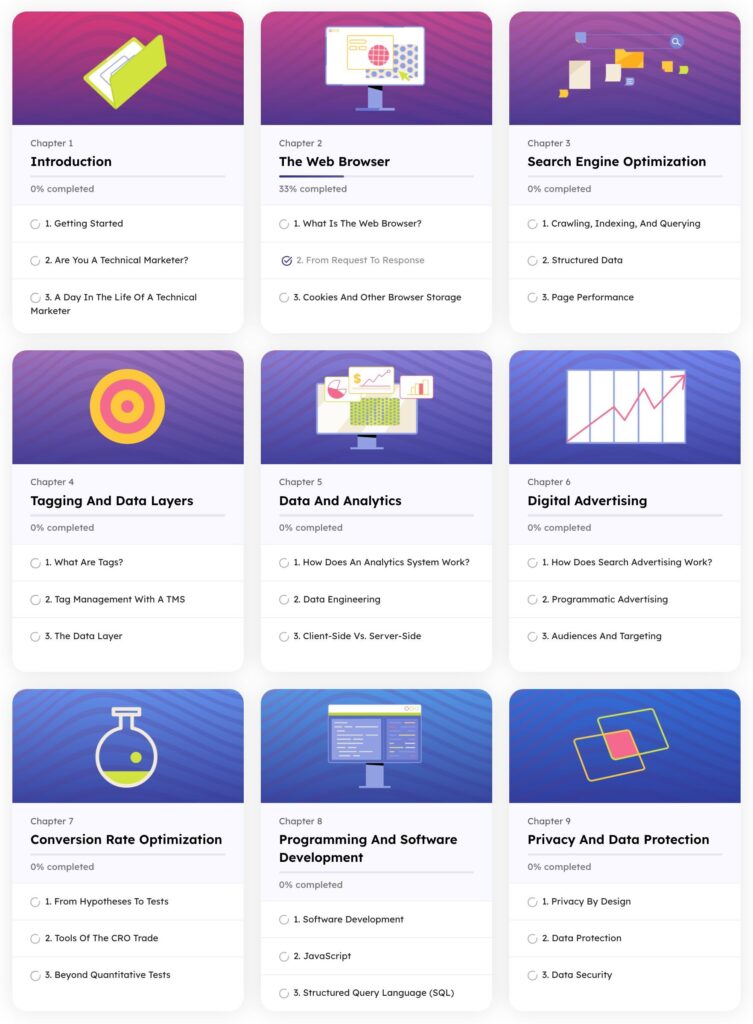Technical Marketing Handbook by Simo Ahava
In his comprehensive and free technical marketing handbook, Simo Ahava and his Simmer team delve into the world of technical marketing, providing valuable insights and practical advice for marketers and professionals. The handbook covers a wide range of topics, including:
- Technical SEO: Learn how to optimize your website for search engines, improve site speed, and enhance user experience.
- Analytics and Tracking: Understand the importance of data-driven decision-making, set up tracking tools, and interpret analytics data effectively.
- Tag Management: Explore best practices for managing tags, tracking scripts, and ensuring data accuracy.
- Conversion Rate Optimization (CRO): Discover strategies to boost conversion rates, optimize landing pages, and enhance user journeys.
- Performance Marketing: Dive into performance-based marketing channels, such as paid search, display advertising, and social media.
- Automation and APIs: Explore the power of automation, APIs, and how they can streamline marketing processes.
- Content Strategy: Learn how to create compelling content, align it with business goals, and measure its impact.

Whether you’re a seasoned marketer/digital analytics engineer or just starting out, this handbook provides actionable tips and techniques to elevate your technical marketing game.
Go to Simo Ahava’s Technical Marketing Handbook.
Remember, effective technical marketing is not just about tools and tactics; it’s about understanding the intersection of technology, data, and user experience to drive meaningful results.
Happy reading! 🚀 Also make sure to check out Simo’s blog and team Simmer’s newsletter if you haven’t already.

